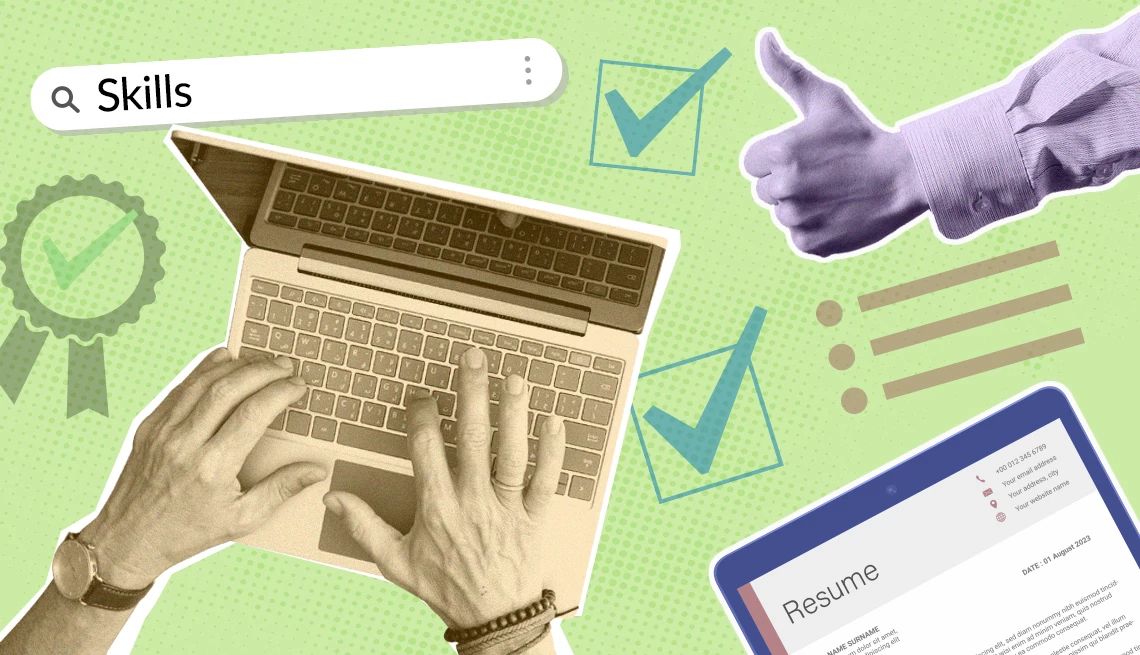AARP Hearing Center


Your résumé is the key that unlocks job opportunities, but those doors will open only if your résumé is the right fit. That’s especially true for older job seekers, who often run into age bias when applying for work.
Though federal, state and local laws make it illegal to discriminate based on age during the hiring process, older workers can still face hurdles when it comes to getting hired. Nearly 1 in 6 adults age 50 and older (14 percent) said they weren’t hired for a job due to their age, according to a 2022 survey from AARP Research. A 2024 Transamerica Institute survey found that 35 percent of employers said there is an age when applicants are too old, and many of them identified 58 as the “too-old-to-hire” age.
Get ready to get hired with AARP’s Job Search Toolkit
To write a winning résumé and improve your chances of advancing to the interview stage, older applicants should review their résumés to make sure they’re not making mistakes by revealing unnecessary information about their age, a practice also called age-proofing. Tips for age-proofing your résumé include:
- Remove graduation dates and other unnecessary details. If employers know the year in which you graduated from college or high school, they will quickly estimate your age, whether they’re biased or not. Other details that don’t belong on a résumé anymore because they might suggest an older applicant are use of a full street address (city and state are enough) and a landline phone number (a cellphone number is sufficient). If your email service is from an older service (AOL, Hotmail, Yahoo, etc.), consider creating a Gmail account for your job search.
Instead of an statement of objectives, include a professional summary or executive summary. The summary is a brief paragraph that quickly but clearly describes your best skills and job goals. - Customize your résumé for each job opening. Before your résumé makes it to human eyes, it most likely will be screened by a technology known as an applicant tracking system. The system goes through each résumé looking for keywords that best match what the employer is seeking. For each job you apply for, if you have the relevant skills or experience, make sure to use the exact language from the job posting, not a similar term.
- Focus on your recent experience. Employers care more about what you can do for them now, not what you may have accomplished decades ago. Focus on the specific job responsibilities you have had in the past 15 years, making sure to show the skills you developed in those roles. When including jobs from more than 15 years ago, only describe the skills most relevant for the job you are applying for and consider removing dates of employment.
For each job listed in your work history, consider using bullet points to draw attention to show what you achieved in the role. - Limit your résumé to two pages. Your résumé has only a few seconds to make an impression on recruiters — just 7.4 seconds, according to one estimate. Make each instant count by being clear and concise about why you’re the best fit for that role rather than elaborate your decades of work history.
Watch a video on tips for age-proofing your résumé
How to handle gaps in your résumé
More than 2 out of 3 workers (68 percent) have a gap in their résumé, according to a March 2023 survey from Indeed Flex. While the survey didn’t report the numbers by age groups, the three main reasons people gave for having periods when they weren’t employed — family responsibilities (39 percent), layoffs (25 percent) and relocation (16 percent) — are common life experiences for people age 50 and older.































































More From AARP
How to Handle Layoffs and Other Gaps on Your Résumé
5 tips on how to describe time away from work in your employment history
Write a Winning Résumé
Need help updating your resume or preparing for an interview? These tips can help.
How to Show Accomplishments on Your Resume
Get your resume noticed once and for all. Find out how to phrase your resume by focusing on one simple concept
Recommended for You